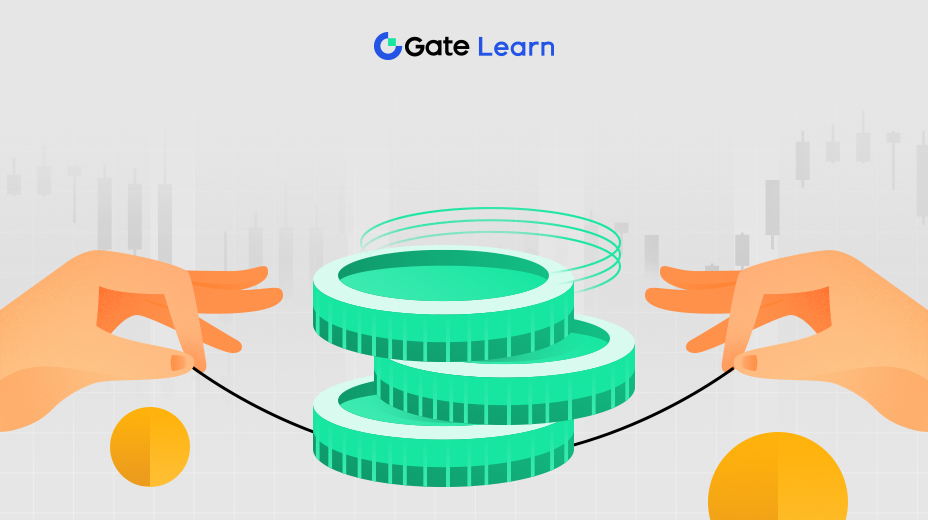ビットコインマイニングとは
「マイニング」は、ブロックチェーンネットワークが元帳を行うのを助けるための計算能力を提供するノードの行為の比喩です。コンセンサスメカニズム、一般的なマイニング機器、および市場への半減の影響について学びます
ビットコイン会計権を取得するためにコンピュータマイニングパワーを通じて問題を解決するメカニズムである「プルーフオブワーク(PoW)」を使用しており、マイニングが正常に完了すると新しい「ビットコイン」が報われるため、コンピューティングパワーは収益と直接相関します。
プルーフオブワーク(PoW)
コンセンサスアルゴリズムは、すべてのブロックチェーンネットワーク参加者とノードの間で、分散型台帳の現在の状態について合意(コンセンサス)するための合意であるため、ブロックチェーンネットワークの重要な要素です。 ビットコインネットワークは、PoWマイニングメカニズムを通じてコンセンサスを達成します。
ビットコインマイニングとは、プルーフオブワークを使用して、計算能力を備えたハードウェアデバイスを使用してトランザクションを継続的に計算および検証することによりトランザクションを処理し、元帳の検証を容易にしますが、改ざんを困難にし、ネットワーク全体のネットワークセキュリティと同期を確保し、報酬としてビットコイン料金を獲得します。 ビットコインマイニングのオペレーターはマイナーと呼ばれます。
マイニングの本質は、列挙によって必要なNunce値を満たすためにマイニングパワーを競うことです。 さらに、マイニングには、その前にいくつかのゼロがあるブロックハッシュ値が必要であり、必要なゼロの数はマイニングの難易度と相関しています。 ビットコインネットワークは、システム全体のハッシュレートに基づいて、2,016ブロックごとにすべてのノードのマイニング難易度を自動的に調整し、ブロック生成の平均時間は約10分です。
ビットコイン採掘設備
ビットコインマイニングの出力はノードの計算能力のサイズに比例するため、会計権をめぐる戦いはノード間のマイニングパワーの戦いに発展しました。 ビットコインマイニングは、中央処理装置(CPU)マイニングからグラフィックスプロセッサマイニング(GPU)マイニング、アプリケーション特殊集積回路マイニング(ASIC)へと進歩しました。
ビットコインマイニングの総計算能力は、ビットコインの初期には低く、比較的競争力がなかったため、基本的なCPUをマイニングに使用することができました。 CPUは2010年に、マルチコアアーキテクチャを持ち、ビットコインマイニングの作業モデルと一致する並列コンピューティングにより適した、プリンポップのCUDA MinerによってリリースされたGPUに置き換えられました。
2年後、別のハードウェア開発会社が当時のGPUの約200倍の高速マイニングハードウェアデバイスを発明し、ASICチップ製造業界とビットコインマイニング業界全体を生み出しました。 現在、ビットコインマイニングパワーはいくつかの大規模なマイニングプールに集中しており、上位6つのプールがビットコインネットワークの総計算能力の75%以上を占めています。

画像ソース: btc.com (https://btc.com/stats/pool?pool_mode=week)
ビットコイン メンプール
ユーザーが送信したトランザクションをマイナーに渡してパッケージ化してチェーンにアップロードする前に、それらは集約され、ビットコインネットワーク内の各ノードに固有のビットコイン mempoolに保存されます。 トランザクションを処理するビットコインネットワークの容量とノードのストレージ容量が制限されているため、mempool内のトランザクションの総データ量が最大に達すると、手数料の低いトランザクションの優先順位が下がり、手数料の高いトランザクションが最初に処理されます。
ビットコインの半減期
ビットコインのマイニング歩留まりは、ネットワークの総計算能力の難易度が自動的に調整されることに加えて、ブロックが生成されるにつれて減少します。 ビットコインネットワークの開始時に生成されたすべてのブロックには、50BTCが支払われました。 ただし、ビットコインネットワークが210,000ブロックを生成するたびに、各ブロックのビットコイン報酬は半分に削減されます。
ブロックが10分ごとに作成されると、ビットコインネットワークは4年ごとに半分になります。 ビットコインマイニングの報酬は最終的に2140年にゼロに減らされ、流通しているビットコインの総数は最大2100万に達します。 マイナーは、その日以降、新しいブロックをマイニングすることでマイニング報酬を獲得できなくなりますが、取引ユーザーからのみ手数料を獲得できます。

暗号業界で最も重要な成長の物語の1つは、ビットコインの半減です。 いくつかの理論(S2Fモデルなど)によると、半減はビットコインの希少性の増加を意味し、最終的には価格に反映されます。 そして、今日まで、すべての半減はビットコインの価格を押し上げてきました。

ハイライト
- ビットコインは、計算能力を用いて問題を解決する仕組みである「プルーフ・オブ・ワーク(PoW)」を採用して会計権を取得し、会計処理が成功すると新たに発行された「ビットコイン」が報われるため、算術能力は鉱夫の収益と直接的な相関関係があることが示唆されます。
- マイナーは、より多くの収益を得るために機器の計算能力を向上させ、最初のCPUとGPUからアルゴリズムのASICを開発するインセンティブを持っています。機器のコストは上昇し、計算能力は主に多くの大きなプールに集中しています。
- ビットコイン発行は4年ごとに半減しており、BTCがますます不足していることを示唆しており、これは暗号業界で重要な話です。 これまでのところ、半減するたびにビットコインの価格が大幅に上昇しています。





